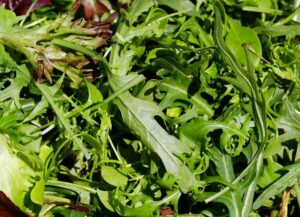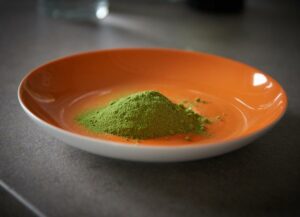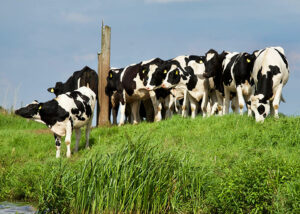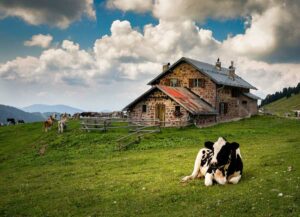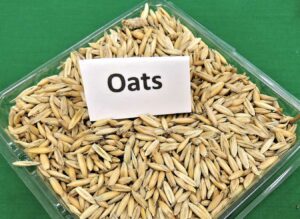Alvaro Garcia
Sesame silage could be a good alternative to other forages in semi-arid regions. In several parts of the world the dry season severely restricts the availability of forage for livestock. This is particularly true in tropical regions where not only is the herbage mass available the constraint but also its nutrient digestibility. Under these conditions, farmers need to rely on forages harvested and preserved during the rainy season, with hay and silages being the most frequent approaches to conservation.
The quality of the preserved forage is generally never higher than the original fresh material. These losses in nutritive value can arise from inadequate fermentation, heating/oxidation of nutrients, effluent, and growth of undesirable microorganisms. Corn silage has been a staple in the diet for dairy cows across the years since it supplies highly digestible nutrients when preserved right.
The problem with corn, however, is that its success as a crop highly depends on water availability, particularly during critical stages of its development. Other crops that are used in these regions are millet (Pennisetum glaucum) and sunflower (Helianthus annuus L.). Another plant species with potential for silage production in semi-arid regions is sesame (Sesamum indicum L.).
Sesame characteristics as a forage
Sesame is a flowering plant with numerous wild relatives occurring in Africa. It is one of the oldest oilseed crops known, domesticated well over 3000 years ago. Its extensive root system allows this crop to be quite tolerant to drought-conditions, growing where other crops fail. It does require however adequate moisture during germination and early growth.
Sesame varieties have adapted to many soil types. The high-yielding crops thrive best on well-drained, fertile soils of medium texture and neutral pH, it does have however less tolerance for saline soils and water-logging conditions. Sesame crops require 90 to 120 frost free days and warm conditions above 23 °C favor its growth and yield.
A recent experiment (Amorim et al., 2020) evaluated the fermentation parameters, chemical composition and in situ degradability of sesame silage compared to other more commonly used silages in dry climates. The climate of the region where the experiment was conducted is characterized as hot and semi-humid, with minimum and maximum temperatures of 18 ºC and 36 ºC, respectively, and average precipitation of 900 mm.
The experiment had two parts:
- Evaluation of losses, fermentation and chemical composition of silages. There were four treatments one per crop of: sesame, corn, millet and sunflower. Four replicates per crop were ensiled in 3 kg micro-silos and allowed to ferment for 30 days.
- In situ degradability was evaluated using four treatments (sesame, corn, millet and sunflower silages) and three replicates (animals) per treatment. Incubation times were 0, 6, 12, 24, 48, 72 and 96 h.
Field plots were of 143 m2 divided in 16 plots of 5 m2 each and separated by an uncultivated buffer row (1 m wide). Twenty seeds were sown per linear meter. Fertilization per hectare was the same for all crops and as follows: 70 kg of urea, 40 kg of superphosphate and 60 kg of potassium chloride.
Sesame silage is a good quality forage for dairy cattle
Biomass production per hectare was numerically the highest for millet (17.8 tons) followed by sesame (10.8) however there were not statistical differences between both. The pH observed for sesame silage was adequate for good fermentation (4.07) and did not differ from that of millet or corn. Sesame silage however had the highest ammonia nitrogen concentration of all 4 silages (8.85%).
Table. Chemical composition and ruminal degradability of silages
 Overall, sesame silage had similar losses and fermentation parameters than corn and sunflower silages. It had moderate dry matter (32.65%; table), adequate crude protein (10.13%) and total digestible nutrients (51.44%), and low lignin (2.55%).
Overall, sesame silage had similar losses and fermentation parameters than corn and sunflower silages. It had moderate dry matter (32.65%; table), adequate crude protein (10.13%) and total digestible nutrients (51.44%), and low lignin (2.55%).
Sesame silage also presented high DM degradability (like corn and millet), suggesting good nutritional value as a ruminant feed. Result of this experiment showed that sesame has the potential to produce quality biomass and silage for dairy cattle feeding.
Reference:
Amorim, D.S., Loiola Edvan, R., do Nascimento, R.R., Bezerra, L.R., de Araújo, M.J., da Silva, A.L., … Nascimento, K.D.S. 2020. Fermentation profile and nutritional value of sesame silage compared to usual silages. Italian Journal of Animal Science. 19(1): 230-239.
© 2020 Dairy Knowledge Center. All Rights Reserved.


